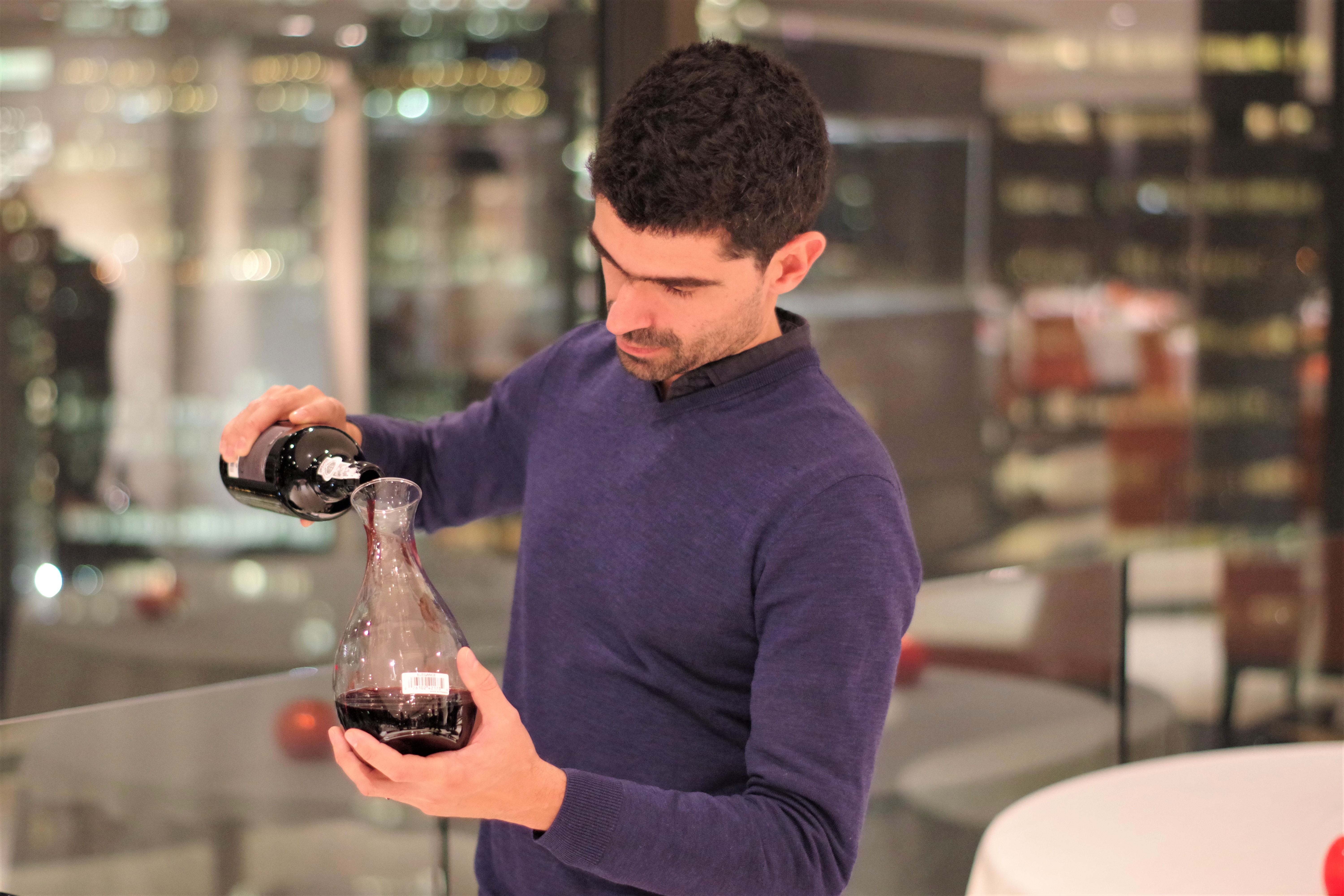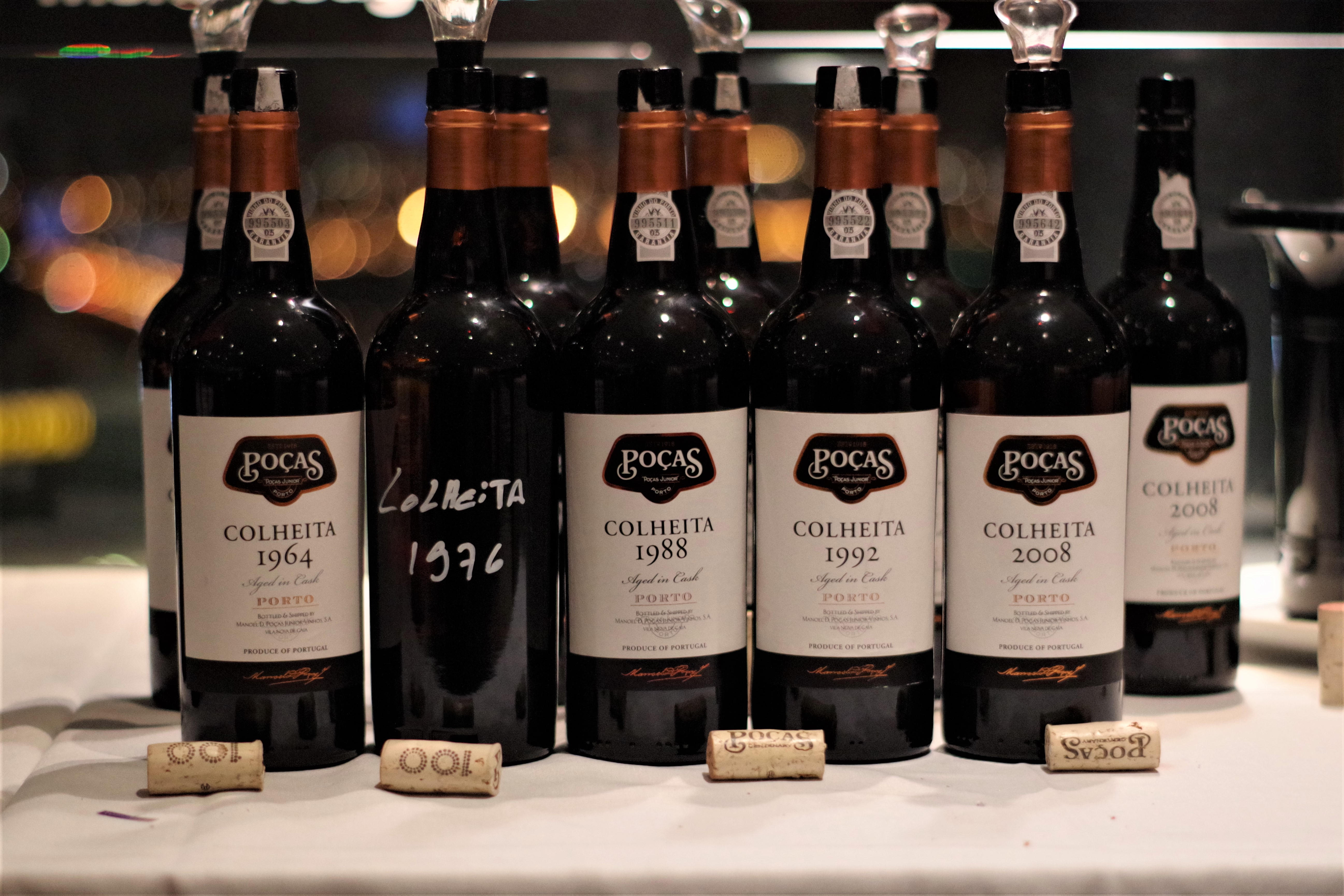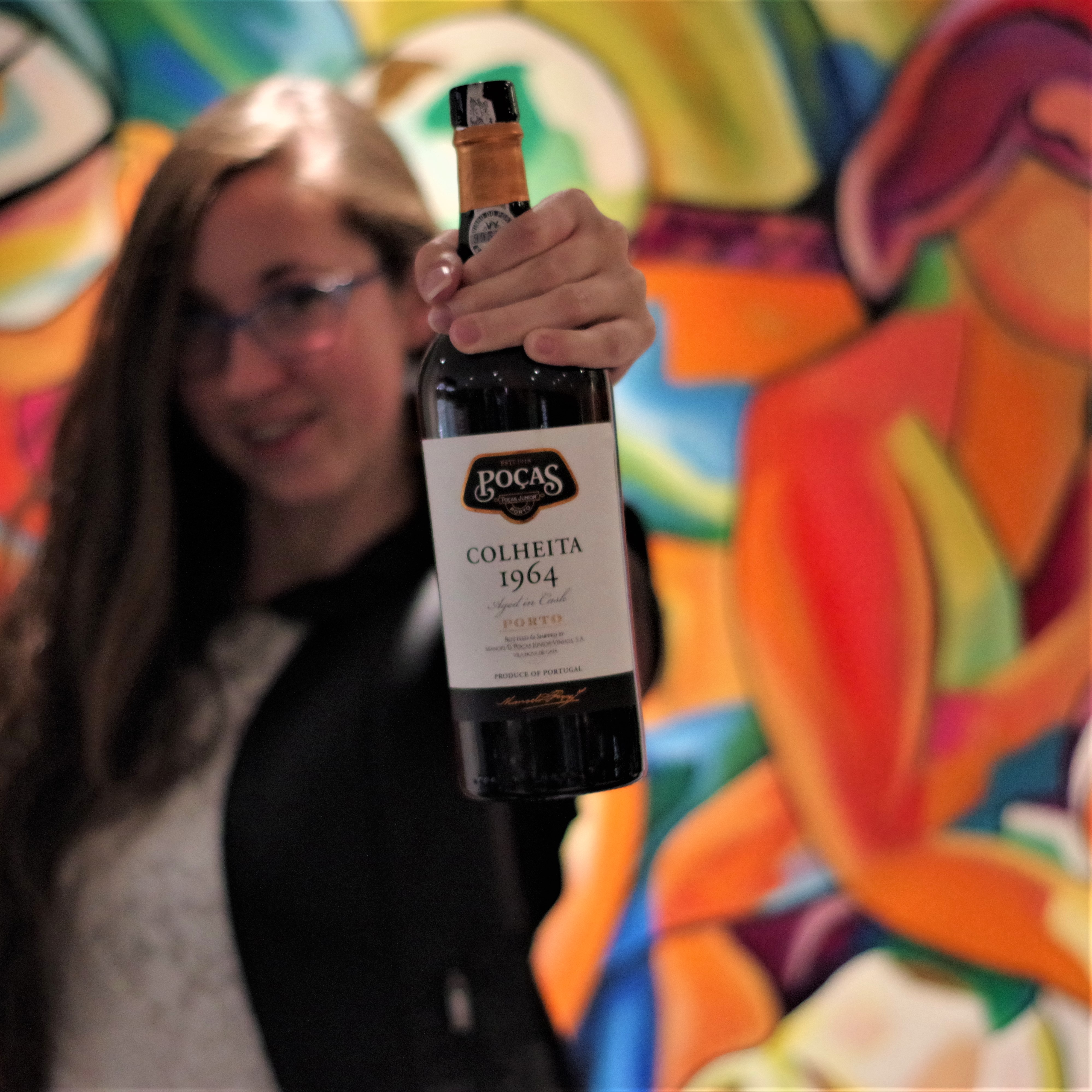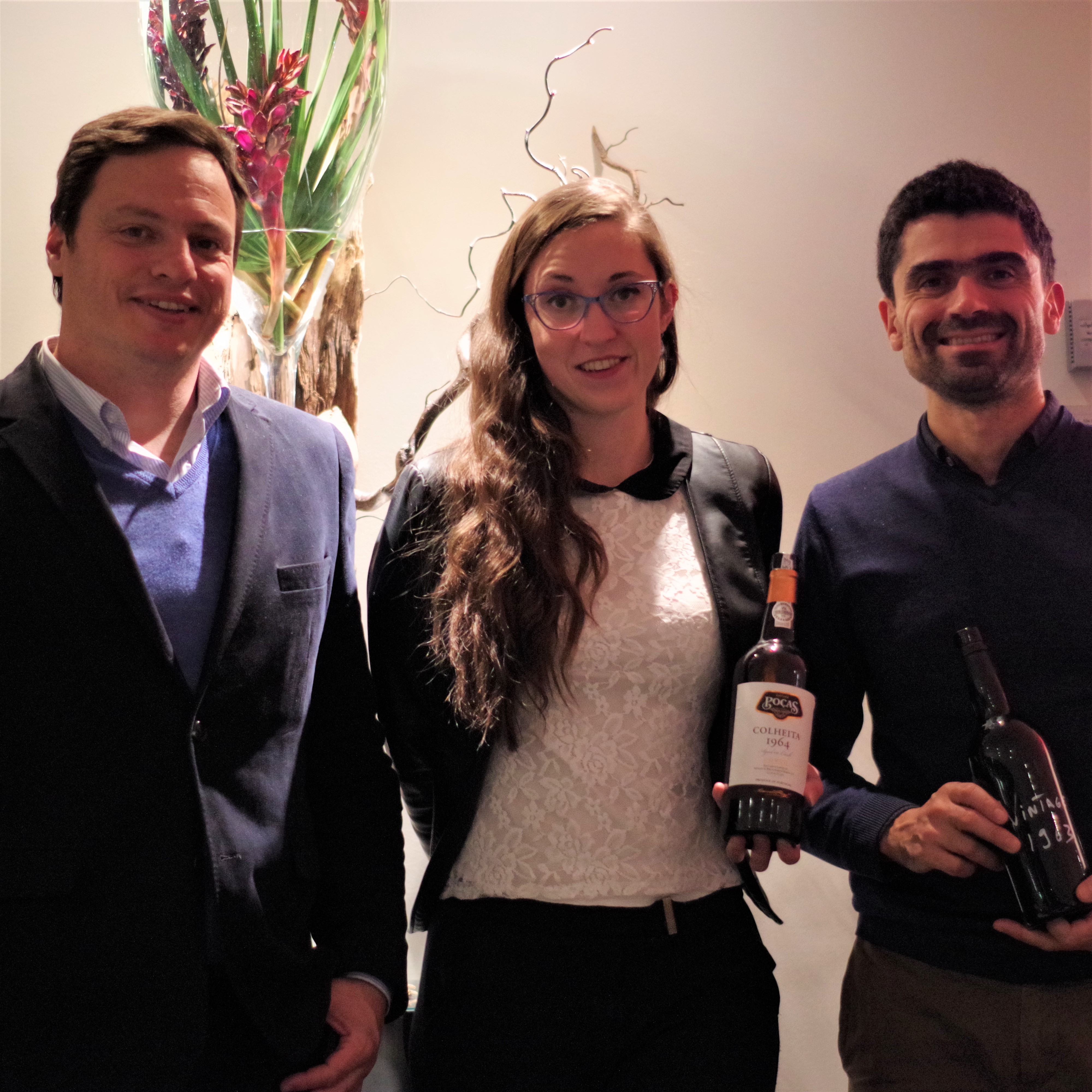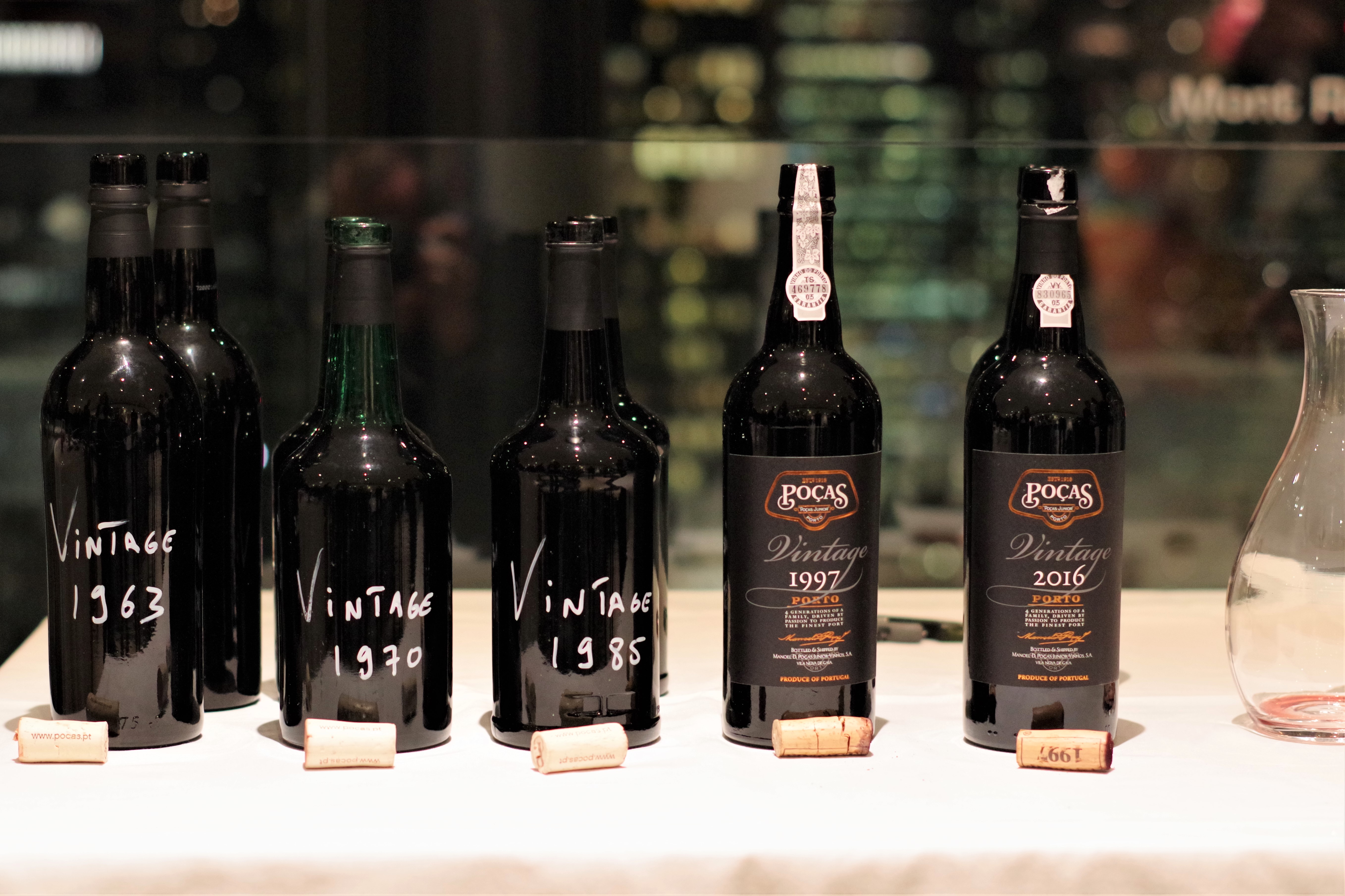 The Poças porto house is turning centenary. 100 years old family business, 100 years of dedicated production, this call for celebration, don’t you think?
The Poças porto house is turning centenary. 100 years old family business, 100 years of dedicated production, this call for celebration, don’t you think?
Let’s explore the history of Poças through their vintages and Colheita. We know a wineries story is told through their wine and those that have the chance of having a generous and tell-tale wine library has truly the best archive they could hope for. What’s even better is when estate decides to share these archives and rare expression of a specific past. Each of those bottles represents a huge sentimental value. Just the 1963 Vintage has no more than 40 bottles left in their cellars. It’s part of the very first time they actually made Vintage wines, their first being 1960.
The Poças family is relatively a newcomer in port winemaking. They started as a brandy producer in 1918 but had to sell the distillery in 1934 when the Salazar regime imposed a monopoly on the distribution of Aguardente to fortify port. Nowadays, Manuel Poças junior, the founder’s grandson runs the company, with the purchase of Quinta Das Quartas in baixa corgo where wines from all of Poças’ quintas have been made ; Quinta Santa Barbara in Cima Corgo used to produce some of Poças’ finest Vintages and LBV Ports; and Quinta De Vale De Cavalos in the Douro Superior, the biggest estate with 51 ha.
Keep in mind, that their production is not exclusive to Porto. You’ll find great Douro Wines from Poças. Even the Vale de Cavalos White is to be expected and enjoyed.
1963 has a tawny nose with a ruby taste. It smells of orange, nuts but also with some dried fruits aromas left. It’s development was a good surprise with marmalade flavors yet a touch of nail polish.
Vintage 1970
Considered as one of the great vintages of all time. The color is hazy with a broken down orange tone. It has a very deep smell and taste.
Vintage 1985
Bright brick, very beautiful sight. It’s surprisingly empyreumatic and nutty. It’s a state between developing and developed.
Vintage 1997
Closed off for now, It’s at a shy stage. It’s a mix of earthy and fruity aromas.
Vintage 2016
Distinctive table grape taste but with such great intensity. Of course, with such youth we’re only looking at potential. From the length and intensity, I’m calling 2016 to show-off great assets in the future.
Colheita 2008
The warmth on the palate announced it would’ve needed more time to decently combine.
Colheita 1992
Very expressive and impressive. Just a sniff and you understand what true joy comes with old porto.
Colheita 1988
As expressive as 1992 yet with a more elegant, fancy and fresh style.
Colheita 1976
The warmth on the finale makes It’s completely closed off.
Colheita 1964
It might have been great, but right now the finale is very simple. The aromas are still fresh and interesting but it loses all intensity on the palate.
La maison de Porto Poças fête son centenaire. 100 ans d’entreprise familale, 100 ans de production dédiée, c’est un appel à la fête, vous ne pensez pas?
Explorons l’histoire de Poças à travers leurs Vintages et Colheitas. Nous savons qu’une histoire de vignobles est racontée dans leur vin et que ceux qui ont la chance de disposer d’une bibliothèque de vins généreuse et révélatrice ont vraiment les meilleures archives qu’ils peuvent espérer. Ce qui est encore mieux, c’est lorsque cette compagnie décide de partager ces archives et la rare expression d’un passé particulier. Chacune de ces bouteilles représente une énorme valeur sentimentale. Rien que le millésime 1963, il ne reste plus que 40 bouteilles dans leurs caves. Cela fait partie des toutes premières fois où ils produisent réellement des vins Vintage, leur premier étant 1960.
La famille Poças est relativement nouvelle dans la production de porto, du moins en comparaison. Ils ont travaillé comme producteur de brandy en 1918 mais ont dû vendre la distillerie en 1934 lorsque le régime de Salazar a imposé un monopole sur la distribution d’Aguardente pour fortifier le porto. De nos jours, Manuel Poças junior, le petit-fils du fondateur, dirige l’entreprise, avec l’achat de Quinta Das Quartas en baixa corgo où tous les vins de Poças sont fabriqués; Quinta Santa Barbara à Cima Corgo produisant certains des meilleurs portos millésimés et LBV de Poças; et Quinta De Vale De Cavalos dans le Douro Superior, le plus grand domaine avec 51 ha.
Vintage 1963
1963 a un nez de tawny avec un goût de ruby. Ça sent l’orange, la noix mais aussi avec quelques arômes de fruits secs. Son développement a été une bonne surprise avec des arômes de marmelade et une touche de vernis à ongles.
Vintage 1970
Considéré comme l’un des grands millésimes de tous les temps. La couleur est trouble avec un ton orange cassé. Il a une odeur et un goût très profonds.
Vintage 1985
Brique brillante, très belle vue. C’est étonnamment empyreumatique et noisette. C’est un état entre développement et développement.
Vintage 1997
Fermé pour l’instant, il est à un stade timide. C’est un mélange d’arômes terreux et fruités.
Vintage 2016
Goût de raisin de table distinctif mais avec une telle intensité. Bien sûr, avec une telle jeunesse, nous ne cherchons que du potentiel. De par sa longueur et son intensité, je désignerais 2016 pour montrer de grands atouts à l’avenir.
Colheita 2008
La chaleur en bouche a annoncé qu’il aurait fallu plus de temps pour se marier décemment.
Colheita 1992
Très expressif et impressionnant. Juste à humer un peu et vous comprenez quelle joie véritable vient avec le vieux porto.
Colheita 1988
Aussi expressif que 1992 mais avec un style plus élégant, sophistiqué et frais.
Colheita 1976
La chaleur sur la finale le rend complètement fermé, malheureusement.
Colheita 1964
C’était peut-être bien, mais pour l’instant, la finale est très simple. Les arômes sont toujours frais et intéressants mais il perd toute intensité en bouche.
N’oubliez pas que leur production n’est pas exclusive au Porto. Vous trouverez d’excellents vins du Douro de Poças. Même le Vale de Cavalos blanc est à anticiper et à apprécier.
